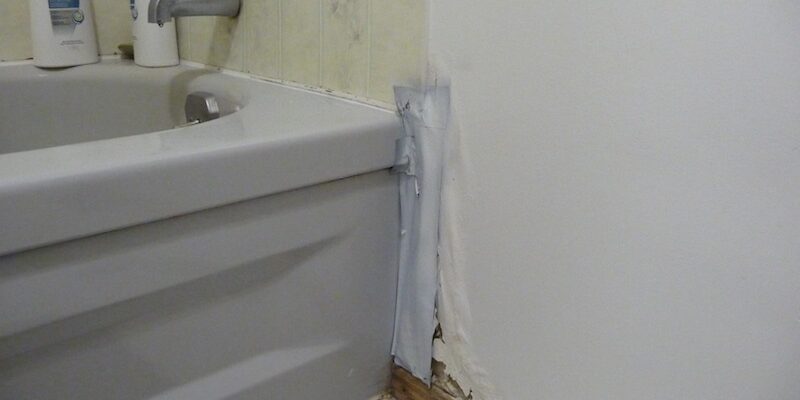Water damage in the bathroom is a common problem. Plasterboard is a commonly used material for finishing work. It is used for partition walls or ceiling cladding because it is easy to hide wiring or other technical elements of communications. Damage to the plasterboard can be done without much effort.
It is a budget material, which in case of defects, can be repaired with improvised means, both at home and by professionals. In the bathroom, plasterboard is used both for the ceiling and the walls. However, this material cannot boast of being resistant to constant exposure to water and temperature fluctuations.
Using plasterboard in the bathroom
Plasterboard is used in the bathroom as a finish. It is often used to create a ceiling. Then it turns out flat, without flaws, and it is easy to hide the wiring. It is also possible to make a multilevel ceiling, decorate it with many lights, and illuminate the bathroom in certain places.
This material is also used to make partitions that separate the bathing area from the things area. They can have shelves, patterns, or other shapes.
Plasterboard is also used as wall cladding under the tiles, which insulates the walls and makes the room more comfortable in terms of temperature. The walls must be clad with a double layer if the bathroom is tiled. The tile is as easy to lay on a wall not covered with plasterboard.
Sheet thicknesses come in 12.5 mm and 9.5 mm. For each type of finishing or damage removal, the specialist chooses the thickness he needs. For example, moisture-resistant gypsum board sheets in the bathroom allow you to level the walls, even if you are not an expert in finishing work.
Types of water damage to plasterboard
Damage to the plasterboard is a common problem after prolonged use. Given the bathroom’s large temperature fluctuations and humidity, there are nuances to using this material in bathroom finishing work. Moisture-resistant gypsum board is often green or blue and is slightly more expensive than regular drywall.
In the bathroom, drywall is exposed to several negative factors. As a result:
- mold appears;
- the sheet dampens when exposed to water;
- cracks or holes appear;
- there is sagging of the material.
All these damages are easy to repair if you know how to do it. With proper use and installation, the sheets can last a long time. Mold on plasterboard in the bathroom is the most common problem.
Drywall repair in the bathroom
The damage can be repaired at home. The source of overwatering is what you should look for when a problem is detected. Drying the sheet will help restore its exclusive properties. Decorative finishing will help remove stains and streaks that remain after drying. Treating the area where the mold was will eliminate its reappearance. Damaged fragments are covered with oxygen bleach or chemicals that have phosphates in them.
If you are allergic, drywall sheets affected by mold must be replaced to avoid health problems.
Destruction of the drywall filling structure requires replacement because the entire system can collapse. If you don’t know how to repair the damage, some specialists can fix the problems in hours. If you make an order, you can apply to the bathroom contractors near you, and there are no unsolvable problems for them.
Auxiliary materials to help remove the damage
Dents, mold, sagging, holes, cracks, black algae, dampness – specialists eliminate all these problems with the help of various means. Commonly used materials for repairs are:
- palette knife;
- putty;
- sealant;
- metal supports;
- chemical agents against mold;
- plugs for fixing the ceiling.
Sealant is one of the most basic means of preventing water leakage due to their viscous substance. It is a sealant between the bathtub and the wall, lined with plasterboard. Putty allows for hiding all the damage. It is applied in several layers and covered with a particular material.
The contractors will estimate your budget and do everything within the time frame specified in the contract. As a result, you will have a successful water-damage drywall repair and enjoy an updated bathroom afterward.













Comments